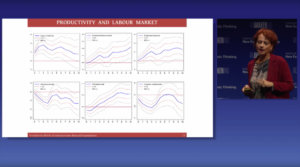The concern that weak demand could lead to a persistently stagnant economy goes back to Keynes’s General Theory and led Alvin Hansen to coin the term “secular stagnation.” Following the second World War, this perspective was not completely lost, but it became a backwater in mainstream macroeconomics. The emerging neoclassical synthesis model attributed Keynesian demand constraints to nominal rigidities that would be resolved in what was described as the “long run,” probably not lasting more than two or three years. This paper argues that it was a mistake to dismiss secular demand stagnation as a potentially important problem in modern developed economies. We argue that the theoretical case for possible secular demand stagnation remains strong. Perhaps more importantly, we provide evidence that the U.S. has experienced a specific kind of secular stagnation in the years following the global financial crisis and the Great Recession, and that there is a good chance that weak demand generation will prevent the U.S. economy from fully realizing its potential for some years to come.
Working Paper
Conference paper By
Download- FAZZARI-Sec-Stag-INET-171021.pdf (pdf, 563.1 KB)




